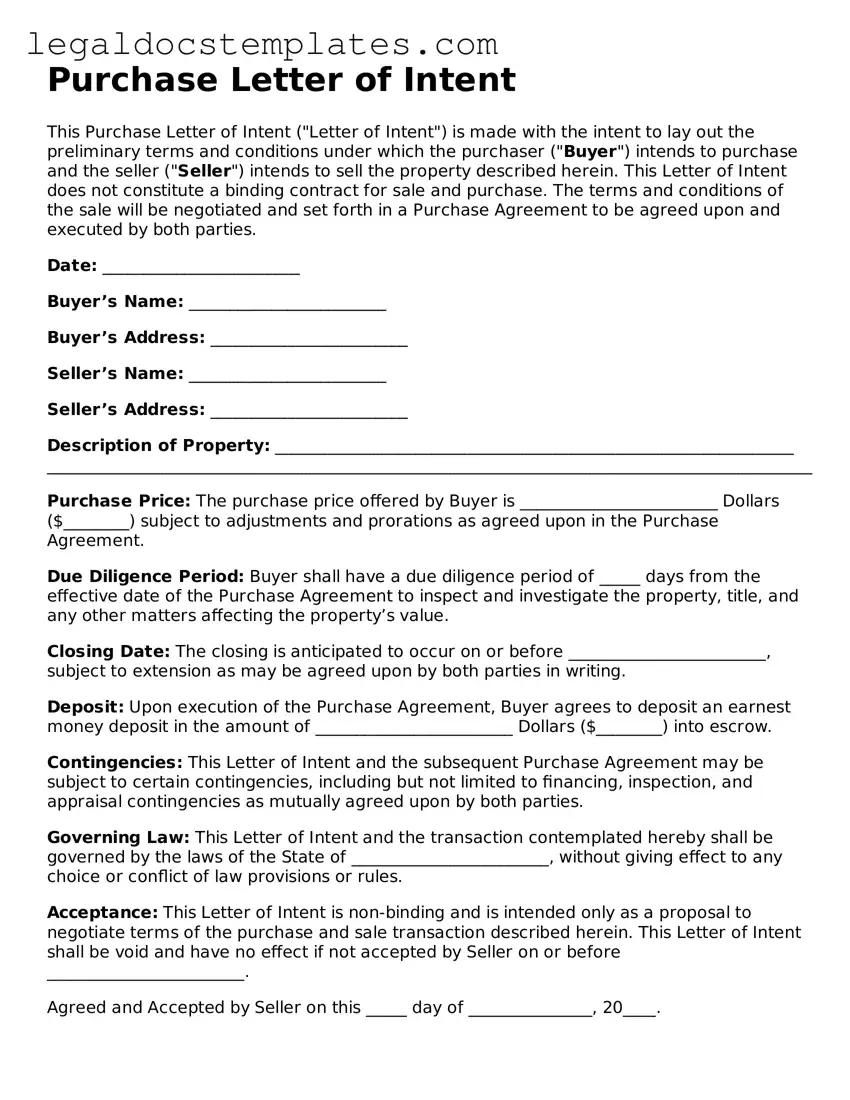Purchase Letter of Intent
This Purchase Letter of Intent ("Letter of Intent") is made with the intent to lay out the preliminary terms
and conditions under which the purchaser ("Buyer") intends to purchase and the seller ("Seller")
intends to sell the property described herein. This Letter of Intent does not constitute a binding contract for
sale and purchase. The terms and conditions of the sale will be negotiated and set forth in a Purchase Agreement
to be agreed upon and executed by both parties.
Date: ________________________
Buyer’s Name: ________________________
Buyer’s Address: ________________________
Seller’s Name: ________________________
Seller’s Address: ________________________
Description of Property: _______________________________________________________________
_____________________________________________________________________________________________
Purchase Price: The purchase price offered by Buyer is ________________________ Dollars ($________)
subject to adjustments and prorations as agreed upon in the Purchase Agreement.
Due Diligence Period: Buyer shall have a due diligence period of _____ days from the effective date
of the Purchase Agreement to inspect and investigate the property, title, and any other matters affecting the
property’s value.
Closing Date: The closing is anticipated to occur on or before ________________________, subject
to extension as may be agreed upon by both parties in writing.
Deposit: Upon execution of the Purchase Agreement, Buyer agrees to deposit an earnest money deposit in
the amount of ________________________ Dollars ($________) into escrow.
Contingencies: This Letter of Intent and the subsequent Purchase Agreement may be subject to certain
contingencies, including but not limited to financing, inspection, and appraisal contingencies as mutually
agreed upon by both parties.
Governing Law: This Letter of Intent and the transaction contemplated hereby shall be governed by the laws
of the State of ________________________, without giving effect to any choice or conflict of law provisions or
rules.
Acceptance: This Letter of Intent is non-binding and is intended only as a proposal to negotiate terms
of the purchase and sale transaction described herein. This Letter of Intent shall be void and have no effect if not
accepted by Seller on or before ________________________.
Agreed and Accepted by Seller on this _____ day of _______________, 20____.
________________________
Seller’s Signature
________________________
Seller’s Printed Name
Agreed and Accepted by Buyer on this _____ day of _______________, 20____.
________________________
Buyer’s Signature
________________________
Buyer’s Printed Name
